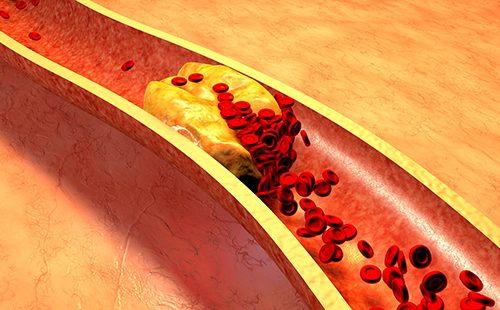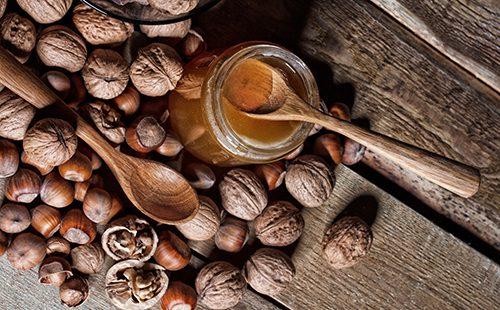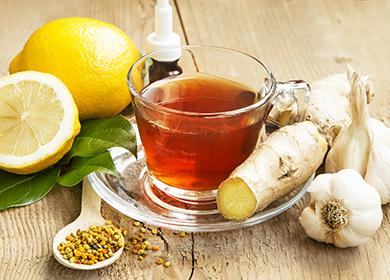The content of the article
Atherosclerosis is the adhesion of atheromatous plaques to the walls of arteries. Plaques represent conglomerates, inside of which are blood-insoluble molecules of cholesterol and other fatty acids. They are attached to the walls of blood vessels using fibrin filaments. Subsequently, adhering plaques are impregnated with calcium salts and harden together with the vessel wall under them. The vessel loses its elasticity, its lumen narrows.
Atherosclerosis is manifested by high blood pressure, a violation of the blood supply to the limbs. Its later complications boil down to coronary heart disease, myocardial infarction, or stroke. But varicose veins are not associated with it, since atheromatous plaques in the vessels of the veins do not appear - only in the arteries. Age-related diseases of the veins of the arms and legs are caused only by a gradual weakening and stretching of their walls.
Atherosclerosis and cholesterol: is there a relationship
Cholesterol is a water insoluble substance. Therefore, for its transportation with blood, the body uses protein molecules into which cholesterol is "packed". The result is protein-lipid complexes (containers). They are of two types:
- “Bad” (low density lipoproteins) - prone to clog vessels;
- “Good” (high density lipoproteins) - which almost do not form deposits on the walls of blood vessels and even sometimes “take off” the “bad” deposits that have already adhered recently and return with them to the liver.
In addition to them, there are chylomicrons (giant complexes) and very low density lipoproteins. Recently, researchers have been talking about "very bad" oxycholesterol - a component of well-fried foods of animal origin (repeatedly used for frying animal fat, grilled crust, milk powder). "Bad" and "very bad" cholesterol play a leading role in the development of atherosclerosis, and the latter is also suspected of carcinogenicity.
The cholesterol contained inside the plaques, along with other products of the breakdown of fats, is a vital substance. He participates in the construction of cell membranes and protein membranes for neurons of the white matter of the brain, the synthesis of sex hormones, forms the basis of bile. Recently, the participation of "bad" cholesterol in the hypercompensation (weight gain) of muscles under the influence of training has been proven.
Most of the cholesterol enters the body with products of animal origin, and less is synthesized in the liver. If its intake with food decreases (for example, with the transition to a vegetarian diet), the liver is able to independently increase its production by 20-35%. Therefore, vegetarianism has not justified itself as a way to cleanse the vessels of plaques on their own. And atherosclerosis among plant food supporters is developed as strongly as among adherents of a mixed diet. They are also more common:
- oxalate and phosphate stones - while “meat-eaters” have more common urate in the kidneys;
- recovery difficulties - after injuries, extensive inflammations and surgical interventions;
- muscle growth problems - when playing sports.
Vegetarian mothers are required to return to a normal diet for the entire period of pregnancy and lactation. It has already been proven that cholesterol deficiency in their diet leads to congenital malformations of the mental and physical development of the fetus that are not amenable to correction. In the wake of the "anti-cholesterol" movement in the second half of the last century, there have been cases of stillbirths and infant deaths associated with the critically low cholesterol content in the body and breast milk of expectant mothers.
Theories of Atherogenesis
Over the past half century, several versions of the development of atherosclerosis have been considered, but none of them have been confirmed experimentally or in practice.
- Excess Cholesterol in Food. This option is refuted by data on the causes of death among vegetarians, where the ratio of cardiovascular and other pathologies is the same as among lovers of a mixed diet. With the discovery of hepatic cholesterol synthesis, this version, in general, was supposed to disappear forever, but it is considered the main one today.
- Blood flow features. The assumption that plaques with cholesterol are retained in narrow or not sufficiently elastic sections of blood vessels is refuted by the fact that not capillaries, but coronary and carotid arteries, the largest vessels of the body with the most intense blood flow, are most prone to clogging. Atherosclerosis of the lower extremities significantly lags behind them, developing only as the hip joints age.
- Carcinogenicity of cholesterol. Verification of the version that atherosclerosis is a form of cancer gave an unexpected result. It was experimentally established that in cancer patients, the level of vascular contamination with cholesterol is lower, and not higher, than in other people. The relationship between cancer and cholesterol turned out to be that this substance is part of the membranes of any cells, including malignant ones. A malignant tumor grows ten times faster than healthy tissues. It absorbs all free cholesterol in the patient's body, saving him from atherosclerosis.
- Liver pathology. The possibility of production by the liver of “incorrect” membranes for cholesterol or plasma proteins, which “sew” it to the walls of blood vessels, is being considered now. A convincing (more than 50% of cases and more) relationship between the rate of development of atherosclerosis and various liver diseases was not found, although a certain correlation is present.
- Hormonal background. Interest in this version was spurred by the fact that estrogen is inhibited in women of childbearing age. And then menopause the rate of clogging of blood vessels in them is aligned with that in men. But it has not yet been possible to deliver treatment of atherosclerosis with steroids, since an external background does not give the same effect as the native one.
Immediately after the topic of the dangers of cholesterol was discovered, several long-term studies of the relationship between atherosclerosis and its owner’s lifestyle were launched in the United States. Some of them are still ongoing, but most have already been completed. Thanks to them, the following interesting, although not giving answers to questions on atherosclerosis, observations were made:
- bad habits are not so bad - smoking, drinking alcohol and tonic drinks, inactivity do not affect the rate of development of atherosclerosis;
- the benefits of sports are not so high - an active lifestyle increases the adaptability of the cardiovascular system to work in the conditions of gradual decrepitation of blood vessels, but does not slow the clogging of blood vessels;
- "Bad" cholesterol is not so bad - An increased level of "bad" cholesterol in the blood is accompanied by an accelerated deposition of plaques not always, but in less than half the cases;
- animal products are not more dangerous than vegetable - the amount of cholesterol absorbed with food affects the activity of its synthesis in the liver, but the rate of development of atherosclerosis does not depend on it.
CNS stimulants like tobacco and caffeine, although they do not accelerate atherosclerosis itself, can accelerate the onset of heart attack, stroke and its other complications. Diabetes mellitus also stimulates the deposition of cholesterol on the walls of blood vessels. Glucose, the concentration of which in type 1 and type 2 diabetes mellitus in the blood is always above normal, destroys collagen and elastin molecules. A layer of these viscous proteins is present not only in the skin, but also in the walls of blood vessels - to maintain their elasticity. And sugar destroys it, making vessels fragile and brittle.

Which vessels need cleansing
The cleaning of blood vessels with folk remedies or even medication, under the supervision of a doctor, is most needed by the following arteries:
- coronary;
- sleepy;
- vertebrate;
- major arteries of the limbs.
Cleaning can be carried out for the prevention of atherosclerosis or for therapeutic purposes, since not only hypertension and numbness in the extremities go along with the plaques. In women, corns and corns on the feet disappear, and in men, an improvement in potency occurs, which greatly depends on the quality of the heart and blood vessels. The only problem is how to clean the vessels from cholesterol, if the decrease in its share in the diet:
- useless - the liver will make up its deficit due to its own production;
- and dangerous - without myelin sheaths, the white matter of the brain ceases to conduct signals to the cortex, and without bile healthy digestion is impossible.
Scientific Cleaning Methods
Cardiology proposes to clean the vessels of the brain and other organs from plaques using statins. This is a whole class of drugs, including Simvastatin, Lovastatin, Rosuvastatin. All of them block the production of cholesterol in the liver.
Statins are prescribed in the last stages of atherosclerosis, with coronary heart disease, hypertensive crises, the threat of heart attack or stroke, and also after them during the rehabilitation period. Previously, they were prescribed for preventive purposes. But the serious side effects discovered behind them gradually narrowed the scope of their use only in severe cases.
The most dangerous side effects of statins are:
- drug hepatitis and liver failure;
- gallstone disease;
- liver cancer (in 60% of individuals over a five-year period);
- myopathies up to rhabdomyolysis (muscle necrosis).
Vascular cleaning at home with statins turned out to be life threatening no less than the complications of atherosclerosis itself. Although work to improve the properties of these drugs is ongoing, they are now recommended for use only with an extremely high probability of complications of atherosclerosis. In addition to them, there are other groups of “cleansing” drugs.
- Fibroic Acid Derivatives. Bile synthesis stimulants that increase cholesterol consumption (bile contains cholesterol). They are highly carcinogenic and provoke gallstone disease in the first few years from the start of administration.
- Sequestrants of bile acids. Blocking the absorption of bile from the intestine along with everything that it has broken down. Gases, diarrhea and colic are the most common consequences of their treatment, and the most dangerous of them is the development of chronic pancreatitis.
- A nicotinic acid. Vitamin PP. In the case of atherosclerosis, it prevents spontaneous lipolysis - the entry into the bloodstream of cholesterol and fatty acids from the subcutaneous fat. Like everyone else B vitaminsIt also strengthens the walls of blood vessels, stabilizes their and heart muscle.

How to clean blood vessels in folk ways
Discussion of how to clean and strengthen blood vessels using herbs, you need to start with the fact that traditional medicine is powerless against atherosclerosis as well as scientific. It is possible to strengthen the vessels with its methods, but not to clean the existing deposits.
Low Efficiency Tools
Atheromatous plaques tend to become inflamed. This leads to their accelerated hardening and cracking, which is fraught with ruptures of the walls of blood vessels or spontaneous thrombosis. The basis for the treatment of atherosclerosis should be a reduction in inflammatory reactions in the vessels. But part of the folk remedies, with the help of which it is allegedly possible to clean the blood vessels of the heart and other major arteries of the body, does not give a similar effect. We list some of these useless measures.
- Soda. Its ingestion is limited to quenching hydrochloric acid in the stomach with the release of carbon dioxide and water. Soda is good for heartburn and serves as a means of radical skin whitening in home cosmetology. With regular ingestion, it shifts the balance of acidic environments, including urine and sweat, to the alkaline side. This can to some extent compensate for acidosis (acidity) in inflammatory reactions, but it is unlikely to positively affect the walls of blood vessels.
- Linen. Natural enveloping agent, which is prescribed for violations of the digestive tract, gastritis, duodenitis, peptic ulcer of the stomach and intestines. The mucus contained in flax seeds is not an absorbent capable of binding bile, fatty acids or other compounds associated with atherosclerosis. But here linseed oil contains the “correct” omega-6 / omega-3 fatty acid ratio, close to 1 / 4.2. It is this ratio of these components that helps reduce inflammation reactions in the vascular wall. However, in order to obtain an anti-inflammatory effect, it is much more reasonable to use oil from it, not flax, to cleanse the vessels.
- Honey. A mixture of polysaccharides, among which are rare, like levulosis, and common, like glucose (it is the most in honey). The exchange of sugar in the body is associated with atherosclerosis in that an increase in its level in the blood accelerates the destruction of blood vessels. And the differences in the body's absorption of natural honey and granulated sugar are small. Therefore, you must be careful with honey.
- Nuts. As well as nuts with honey as the most common option. A dish is considered useful for professional athletes, since in sports high energy costs are combined with maintaining a certain weight category. Nuts are associated with the topic of atherosclerosis, the absence of cholesterol in them and the presence of omega-unsaturated fatty acids. But their reception cannot significantly affect the rate of atherogenesis.
- Hydrogen peroxide. An external antiseptic, which subsequently began to be used to remove papillomas and other purposes unapproved by science. The authorship of the treatment systems with soda and hydrogen peroxide belongs to I.P. Neumyvakin, a scientific and practical figure in the field of space medicine (medical support for space flights), a doctor of sciences who, after the collapse of the USSR, became interested in healing. The hypotheses created by him during this period did not receive scientific confirmation, reviews about the results of their application are also contradictory.
High Performance Techniques
Among the means that can reduce the likelihood and intensity of inflammation of plaques / vascular walls, the following can be distinguished.
- Bay leaf. Rich in volatile, tannins and alkaloids-based essential oils. All of them have antibiotic properties because they are moderately toxic, especially with respect to the central nervous system. Almost all seasonings, including ginger root, are partially poisonous. And black, red pepper and radish even contain alkaloids of the same series as the deadly aconite. Reception of decoctions and infusions of bay leaves gives an acceleration of blood circulation and suppression of the inflammatory response, increased vascular tone, accelerated separation of bile (a field for the "utilization" of cholesterol). Similarly, you can use ginger, chicory, cinnamon, fresh from radish, radish and horseradish, decoction of oak bark, celandine, the color of lilac.
- Apple vinegar. And also fresh from any citrus, sour berries. Food acids are weak antiseptics and anticoagulants. They simultaneously reduce the likelihood of thrombosis, reduce the intensity of inflammation in plaques and vessel walls. Particular attention should be paid to viburnum and mountain ash - berries that are saturated not only with acids, but also with tannins (natural antibiotics), which give them an astringent taste.
- Onion and garlic. Good stimulants of appetite, outflow of bile, digestion, blood circulation and fat metabolism. Their caustic juice sanitizes the cavity of the digestive organs, but it has only a moderate anti-inflammatory effect on tissues beyond. Use onions and garlic for the treatment of atherosclerosis should be exclusively fresh. And Tibetan garlic tincture and other secondary products from them have a reduced therapeutic value.
If there is no allergy, the listed funds can be combined. But they are all contraindicated in cases of stomach or intestinal ulcers. In the presence of erosion, you can clean the vessels with garlic and lemon, chopping four peeled garlic heads with the same amount of unpeeled lemons in a blender. The resulting mixture must be infused for three days in 3 liters of water at room temperature, strain and take 100 ml per day (in the morning on an empty stomach, forty days in a row).
This infusion irritates the walls of the stomach and intestines less than fresh juice of lemon or garlic. Cleaning your blood vessels at home with it helps reduce the risk of increased pain and new bleeding.

